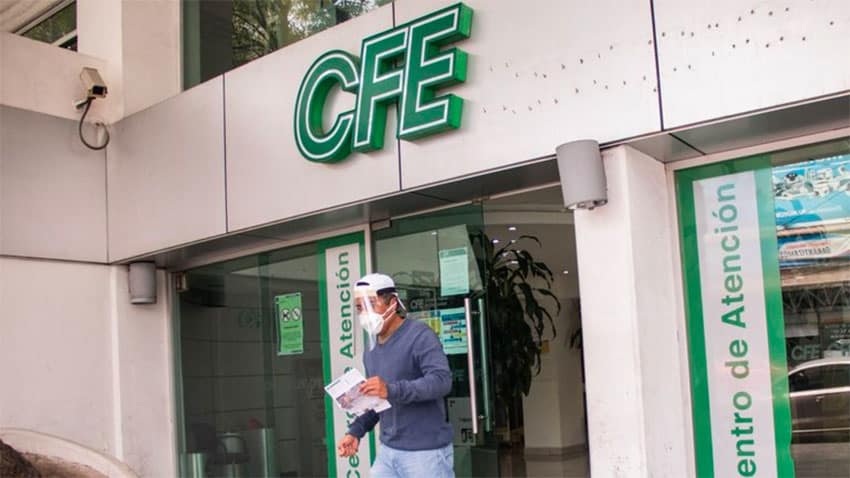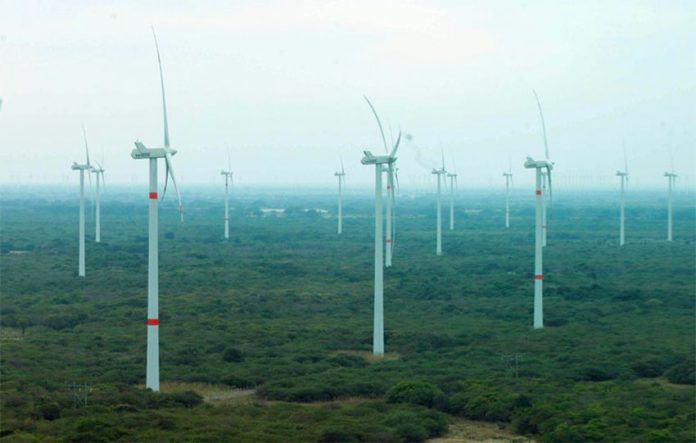The Federal Electricity Commission (CFE) has admitted falsifying a document it used to back up its claim that a wildfire in Tamaulipas contributed to last week’s massive power outage.
But the state-owned company maintains that the fire did in fact occur and that it, as well as a high concentration of renewable energy in the energy system, caused the blackout that affected 15 states.
The CFE presented a statement on December 29 that was supposedly issued by the Tamaulipas Civil Protection agency.
It said that a fire affected transmission lines running between Ciudad Victoria, Tamaulipas, and Linares, Nuevo León, and that the blaze contributed to the blackout that left 10.3 million customers in several of Mexico’s major cities without power for up to four hours on Monday, December 28.
Civil Protection authorities in Tamaulipas responded that they had no knowledge of a fire or the “official statement” exhibited by the CFE. State Civil Protection director Pedro Granados Ramírez declared that the document was false, explaining that the logo it bore was not that of his office, the folio number did not coincide with those in use and the signature was not that of the official named.
On Tuesday, CFE directors conceded that the document had indeed been fabricated but asserted that a grass fire in Tamaulipas did affect transmission lines. There were three other fires in Tamaulipas on Saturday but they didn’t cause any interruption to the electricity supply, they told a press conference, providing a curious side note to the official explanation.
Noé Peña Silva, general director of the CFE transmission division, said the state-owned company has begun the process to investigate all personnel involved in the fabrication and publication of the falsified document.
Operations director Carlos Andrés Mar addressed Tamaulipas Civil Protection authorities’ questioning of the existence of the fire, affirming that it was brought under control exclusively by CFE personnel.
The CFE directors also reiterated the claim that an excessive amount of renewable energy in the national electricity system was a factor in the outage. They said that when the outage occurred, wind and solar projects were providing 28% of the power in the system, which they described as “the highest amount in history.”
CFE chief Manuel Bartlett dismissed the document falsification matter as a minor issue and charged that the real problem at hand was that the previous federal government granted an excessive number of permits to renewable energy companies. As a result such energy is concentrated in some parts of the national grid and causes “imbalances,” he said.
Bartlett said the government’s position of halting the connection of new renewable energy projects to the national system will be maintained and railed against an arrangement that allows private and renewable energy firms to avoid paying for the use of CFE transmission lines.

“The CFE sustains the national electricity system. It [provides] a guarantee for the nation and we’re going to defend it. The president [Andrés Manuel López Obrador] has taken a position that fills us with pride – the CFE has to be rescued,” he said.
The CFE chief has previously charged that the arrangement that allows renewable firms to use transmission lines free of charge saves them billions of pesos, effectively giving them an unfair advantage over the state-owned company.
Led by the staunch nationalist President López Obrador, the government last year moved to limit the participation of renewable firms in the energy market in order to shore up the dominance of the CFE.
The National Energy Control Center (Cenace) last April suspended national grid trials for renewable energy projects under the pretext that the reliability of supply had to be guaranteed during the coronavirus crisis, while the Energy Ministry (Sener) published a new energy policy last May that imposed restrictive measures on the renewable sector.
Both moves faced legal challenges and the Supreme Court suspended the Sener policy last June, ruling that it undermined principles of free competition. The court said this week that it would review the constitutionality of both the Cenace and Sener measures.
CFE communications director Luis Bravo said Tuesday that as a “preventative measure” during periods of low demand, Cenace will be “obliged” to remove a portion of the energy supplied to the national grid via renewable means in order to “guarantee the reliability of the national system.”
In addition to requiring the support of conventional energy generation, renewable projects “lack mechanical inertia and don’t have the capacity to support the reestablishment of the system to a stable condition,” he said.
Managing grids has been a challenge since renewable sources began contributing electrical energy. While conventional sources can be ramped up or down depending on demand, renewable energy output from wind or solar cannot be controlled.
Although they generate large quantities of power at a cheaper price than the CFE, private electricity companies, including those that generate clean, renewable energy from sources such as wind and solar, have provided “nothing” to the national electricity system, López Obrador charged last May.
The president maintains that the CFE, and the state oil company Pemex, must be rescued from the neglect and looting they suffered under past governments in the 36 years prior to the commencement of his six-year term in 2018, a stretch of time he disparagingly refers to as “the neoliberal period.”
Source: El Economista (sp), Infobae (sp)
